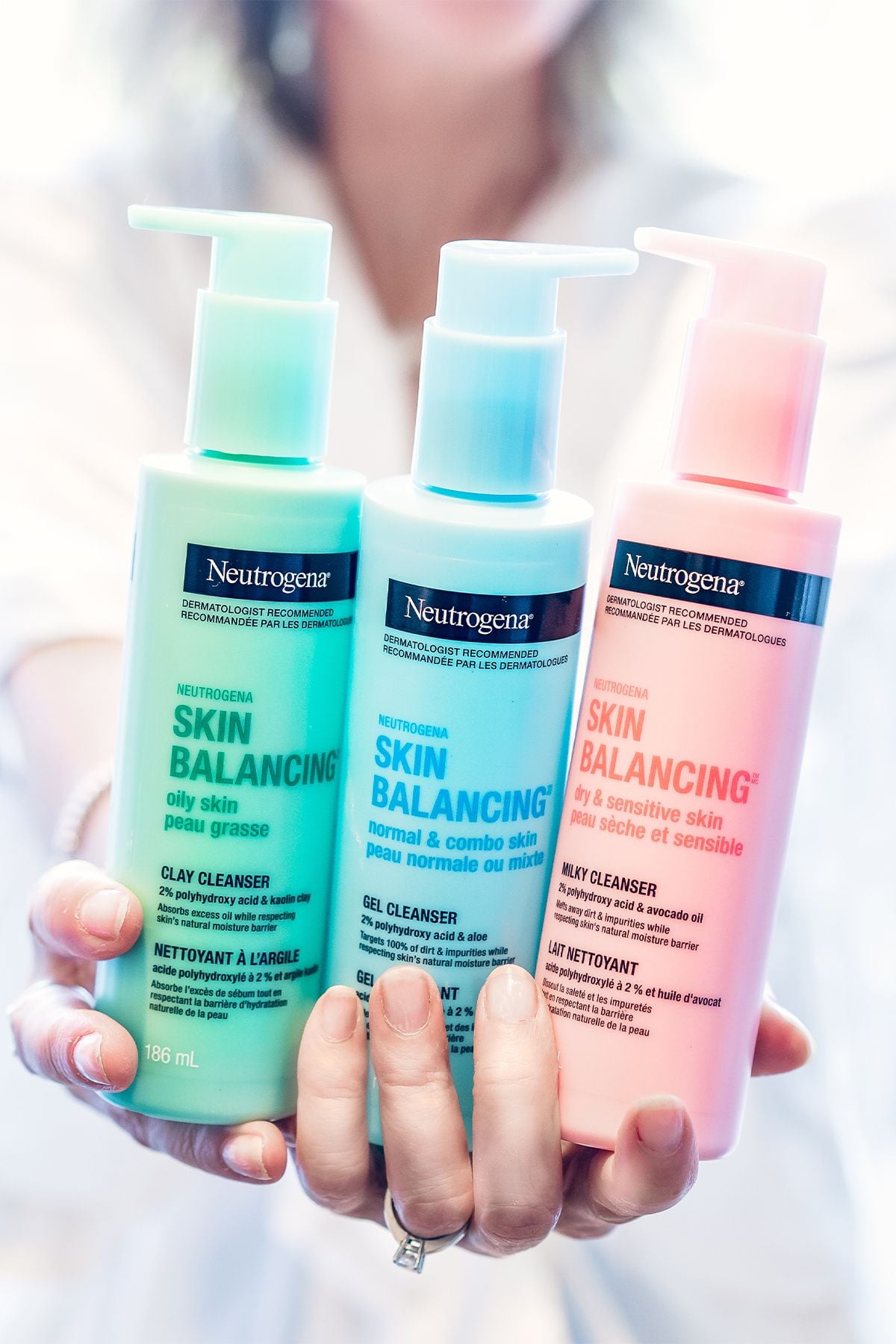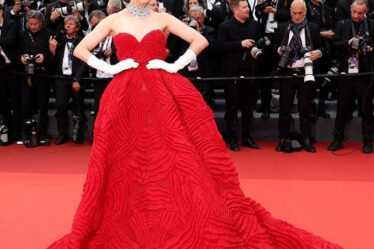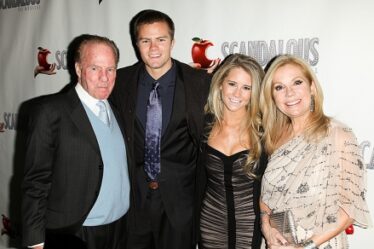
For one executive, the clearest sign that Neutrogena had lost its way came when their daughter started buying CeraVe facewash and moisturiser. The family had shelves stocked with Neutrogena products. But the 20-year-old wanted the brand she saw on TikTok, said the employee who has since left the company.
Kenvue Inc., which owns Neutrogena and Aveeno, has seen its skincare market share plummet to less than 14 percent in 2023 from 23 percent in 2019 — when it was the biggest in the US, according to retail data from researcher Circana.
Neutrogena is missing out on what is now a $42 billion US beauty market because it retreated precisely when rivals went all in. What had once been a nimble, innovative company, became slow-moving and cautious, according to four former employees who weren’t authorised to speak publicly on the matter.
Faced with pandemic-induced ingredient shortages, the brand focused on getting core items on shelves and discontinued some customers’ favourite creams and cleansers. Neutrogena pulled back on advertising and innovation, a person familiar with the business said. As customers flocked to TikTok to discuss all things skincare related, the brand was slow to follow them.
Kenvue attributes much of Neutrogena’s troubles to fallout from the pandemic. The company adjusted its strategies to address changes in consumer behavior and navigate supply chain constraints, a spokesperson for the company said in an email. The spokesperson added that investment in marketing was consistent through the pandemic and that Neutrogena has introduced more than 100 new products in the last five years.
“I forget about them, I have to admit. They’re not top of mind,” said Patricia Oyetakin, a dermatologist based near Atlanta. Nine times out of 10, she says, her patients reach for CeraVe or La Roche-Posay. “What makes [Neutrogena] different? They’re a good brand, but I’m not sure why.” Neutrogena lost the title of dermatologists’ No. 1 recommended skincare brand in late 2021; L’Oréal SA’s CeraVe quickly stepped in to take it.
A turnaround plan announced last year that looks a lot like what competitors have put in place years ago hasn’t yielded any concrete results. Skin health and beauty organic sales slumped 4.5 percent in the latest quarter, the company said Tuesday. That marks the third straight quarter of such declines.
Mimicking the playbook of rivals isn’t a bad idea. But that’s the minimum needed just to keep from falling further behind, said Piper Sandler analyst Korinne Wolfmeyer.
For skeptical investors — not to mention fickle Gen-Z consumers who’ve moved on to other brands — it may not be enough to win.
Falling Off the Radar
Neutrogena, founded in 1930 under the name Natone, became a prestige beauty brand in America on its California vibe and dermatologists’ recommendations.
When Johnson & Johnson bought Neutrogena in 1994 for almost $1 billion, the healthcare giant gave the brand greater distribution and deeper pockets for science-centric advertising. The line of products expanded over the years to include not just soap, but sunscreens, wrinkle cream, acne treatments and lip gloss — fuelling sales gains and garnering a cult-like following among young women. A fresh-faced Jennifer Garner appeared in Neutrogena’s TV spots.
For a while, Neutrogena continued to feel like an independent, family-run brand that was separate from its parent’s corporate influence, said the former employees. Southwest-inspired folk art from Lloyd Cotsen — Neutrogena’s multimillionaire president — hung throughout its Los Angeles office, and a human-sized stuffed cow named Elsie greeted workers and visitors alike inside the entrance.
But as J&J brought Neutrogena more into the corporate fold, former employees said it started to lose its way. As often happens in acquisitions, the brand’s dedicated sales team was tapped to sell products across the parent company’s portfolio. Neutrogena began to fall off the radar of consumers — and physicians — amid rising competition.
One of the product lines that historically distinguished Neutrogena from rivals was sun protection. The brand’s Helioplex sunscreens had strong support among dermatologists focused on skin cancer prevention, one of the employees said. But as consumer concerns arose over the safety of chemical-based sunscreens, CeraVe swooped in with a hydrating mineral-based sunscreen in 2019 that grabbed significant shopper attention. While Neutrogena had its own mineral sunscreen under the Sheer Zinc label at the time, some dermatologists said it was lost in the noise.
Neutrogena’s downfall “started with that mineral sunscreen,” said Amy Brodsky, a dermatologist based in Rockford, Illinois, who has worked with CeraVe on a campaign. “CeraVe kind of beat them to the punch.”
L’Oréal jumped on the opportunity to push its way into dermatologists’ offices. Oyetakin says she’s on a texting basis with her CeraVe sales rep, who comes once a month to drop off samples, whereas Neutrogena’s rep has only visited once this year.
The dermatologist says she used to consider the brand a major player, but the skincare landscape began to shift in late 2020. Consumers and influencers stuck at home on their phones largely shaped the conversation on social media. “CeraVe honestly or just L’Oréal in general seized that opportunity early and they’ve held onto it tightly,” she said.
CeraVe began marketing its products on TikTok in 2020. That year it climbed its way to teen girls’ top skincare brand, where it’s now been ever since, according to Piper Sandler. CeraVe cornered nearly 29 percent of skincare sales dollars across the nation in 2023.
Neutrogena, which didn’t embrace TikTok until 2021, has slipped in the rankings, edged out by not just CeraVe but also The Ordinary, La Roche-Posay, Cetaphil and Glow Recipe.
Neutrogena also pulled back on more traditional advertising. The brand spent just $51 million on national TV ads in 2022, less than half of what it spent in 2020, data from iSpotTV.com shows. And across brands, Kenvue spent $71 million less on research and development in 2020 than it did the year prior. It took three years for R&D spending to surpass its pre-pandemic level.
Meanwhile, competitors ramped up their own new launches. Rival E.l.f. Beauty, noted Piper Sandler’s Wolfmeyer, seems to introduce something new every few weeks, which is key to staying top of mind among teens.
“It’s a new idea to be this launch heavy,” she said.
In the midst of Neutrogena losing both mind and market share, J&J, which also owns Listerine and Tylenol, spun off the consumer-side of its business as Kenvue in an initial public offering last May.
Kenvue’s stock has dropped about 27 percent since then, in part due to lagging sales in skin health and beauty, which makes up about 28 percent of the business. Even as the skincare industry grew sales units by 3.6 percent last year, according to Circana data, sales volumes of Kenvue’s brands fell 4.8 percent in 2023.
“Neutrogena US is a significant part of the business. It’s a high-margin business,” said RBC analyst Nik Modi. “It’s a big deal for investors.”
Too Little, Too Late?
Turning around Kenvue’s skincare business — and specifically the Neutrogena brand — now rests on the shoulders of Jan Meurer, who was promoted to group president of North America from chief growth officer on Jan. 1. So far, the plan he’s tasked with executing has left investors unimpressed.
In a survey of about 60 shareholders, more than half said they were sceptical or not confident that management can turn around its skincare business due to a lack of innovation and rising competition, Modi said in a note published in February.
The company says it’s focussed on making retail displays more visible and easier to shop, and redesigning packaging to better highlight product benefits. Neutrogena is targeting dermatologists with samples and scientific research. Last October, it launched a new line of “Hydro Boost” water creams. All necessary steps, but they haven’t exactly thrust the ailing brand back into the spotlight.
Like its competitors, Neutrogena has enlisted “dermfluencers” and celebs to stump for it. The brand is also trying to build a bridge to Gen-Z in a recent campaign featuring both Garner, now 52, and 21-year-old actress Jenna Ortega.
Kenvue says it will take until the second half of this year, and into 2025, to correct its mistakes — and for sales to pick up.
“Stabilising this business is a key priority for us,” chief executive officer Thibaut Mongon told investors on the company’s first-quarter earnings call. “We are not where we want to be in terms of market-share. The recovery will take time and will not be linear.”
Internally, Meurer is making changes. In April, the company closed the brand’s California headquarters, laying off staff amid a move to New Jersey. In more restructuring, Kenvue is dismissing 51 employees from its Skillman, New Jersey, office this spring in preparation for a move to a new 290,000-square foot headquarters 37 miles north in Summit. And the company announced Tuesday that it’s cutting about 4 percent of its global workforce. Neutrogena is recruiting someone to lead its healthcare professional marketing, and help come up with “science that sells.”
Among certain consumers, it still may be a hard sell.
Thirty-two-year old Alessa Kiyohiro in San Francisco has some 1 million followers across TikTok and Instagram who tune in for her recommendations on skincare and beauty products. She said she was a fan of Neutrogena’s products in her teens but has never mentioned them on her channels.
“Neutrogena is like the one brand that I haven’t really gone back to try to in a long time.”
By Leslie Patton
Sign up to The Business of Beauty newsletter, your complimentary, must-read source for the day’s most important beauty and wellness news and analysis.



